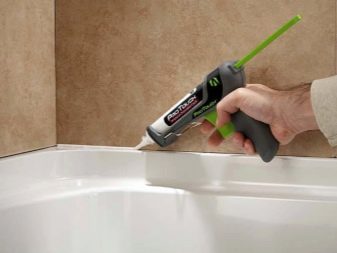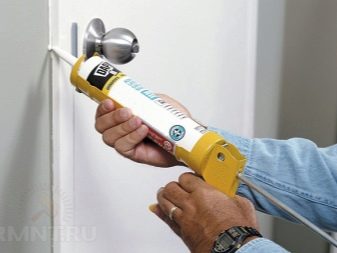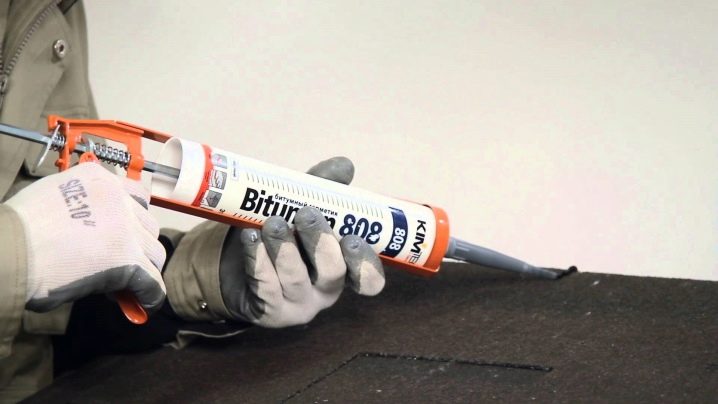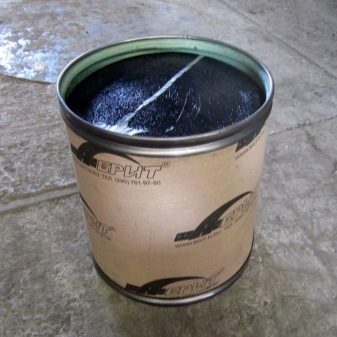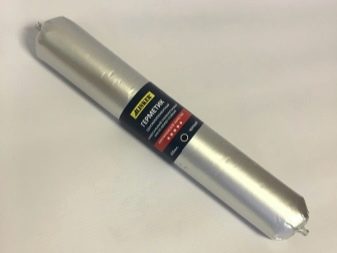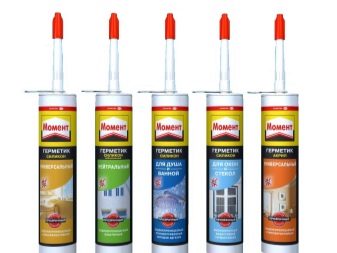How many sealants dry?
Sealant is a viscous mass or paste intended for waterproofing and sealing of various surfaces. Without sealant, it is almost impossible to carry out repair, finishing, roofing and other types of construction work. After applying this building material, beginner craftsmen usually wonder how long it will take to dry.
Application area
There are several types of sealants, each of them has its own scope of application and its own characteristics.
- For example, acrylic sealant is used for interior work. It can be used for wood, drywall, but it is very poorly tolerated by moisture and is not recommended for coatings exposed to high temperatures.
- Silicone sealant is used to bond any building surfaces, including metal or plastic.He bravely withstands different temperature conditions.
- The bitumen version is used to repair roofs, slate and tile, it can be used in wet rooms. Suitable for sealing the drainage system. Vibro-damping properties are lost at very low temperatures.
- Polyurethane is used for outdoor work and does not depend on weather conditions.
Types and drying time
All of the above suture materials have different curing time, which depends on various factors.
Silicone
7-30 minutes after the application of the silicone compound, an initial polymerization will occur. The film that appeared during this time is not recommended to be touched. Full hardening is expected during the day. The average drying speed is 2 mm every day. At high temperatures, the average freezing time is multiplied by a factor of 1.5.
There are two options for silicone:
- acid;
- neutral.
Acid variety - the most common version of sanitary sealant. Well suited for strengthening the joints between the bathroom and the wall, for sealing gaps around the toilet, but the sanitary type is undesirable to use on Teflon coatings and surfaces made of natural stone. The hardening time is 6-7 hours.
Quick-hardening varieties of acidic silicone are commercially available, and their drying time is 2 hours. There are other quick-drying options, for example, Moment Sealant. The glue initially sets in 15 minutes, full hardening can be expected in a day.
The neutral option is suitable for working with almost any surface., it is a universal sealant, which is suitable even for sealing an automobile engine and mirrors, but buying it can cost a lot of money. Dries within 24 hours, and temperature conditions should be kept in the range from +5 to + 40 ° С.
Acrylic
Acrylic sealant can be waterproof and not waterproof, it is harmless and odorless. If you use it, you can wait for 12 hours, but, of course, it all depends on various factors. Sometimes complete drying can occur only after four weeks.
The cost of the acrylic version is about 1.5 times lower than other varieties., the absence of odor and harmful substances allows you to work indoors. Acrylic sealant is used for interior applications, but there are products for external sealing - a frost-resistant option.
While the glue dries, it can be modified, wash off excess protrusions, the already frozen sealant can be easily cut off with a sharp knife.
Bituminous
Bituminous sealant is also called roofing. It has durability, resistance to mechanical and chemical influences, tolerates various temperature conditions and therefore is used for outdoor work.
There are the following types of material:
- bituminous-rubber;
- bitumen-polymer.
Bituminous rubber sealant is widely used when working on a metal roof. It has elastic and plastic properties, it can evenly spread on metal, but it does not drip. The material hardens after evaporation of the solvent, the drying time is 14-22 days.
Bitumen-polymer version is actively used for sheet and roll material, concrete, metal, plastic. Provides prompt elimination of leaks, seals joints and cavities, glues various fragments of the roof. When applying a layer of 3 mm, the formation of the primary film can be expected in an hour.
Polyurethane
The polyurethane version is similar in quality to the mounting foam. It polymerizes under the influence of moisture formed in the air and dries quickly.Great for sealing interpanel seams, log joints, roofing, sealing windows and doors. Able to withstand harsh climatic conditions.
There are such types of polyurethane:
- single component;
- two-component.
The one-component type dries due to contact with air or surface. Sometimes the coating can be moistened a little. The sealant reaches its strength one hour after application, and fully hardens a day later. At temperatures below 23 degrees, the drying time increases.
The two component view is mainly used on an industrial scale. Substances that are included in the composition are mixed immediately before work. The two component version may freeze in 30 minutes.
On sale there are some silicone, acrylic, bituminous or polyurethane types of sealants, designed for narrow applications. For example, aquarium or glass composition. From the name it is clear that this type is used for bonding mirrors or glass, but can also be used for work with ceramics, tiles, fiberglass and other materials.
Drying time depends on the layer thickness and glass parameters, but usually the first film is formed after 15 minutes. It is recommended to fully populate a glued aquarium only on the third day.
Separately, you can select the red and black sealants, which are used both for construction purposes and in car repairs. They can also include elements of both silicone and bituminous material - the drying time depends on these parameters.
They are distinguished by a pronounced color, and this is where their advantage is - classic sealants are colorless and difficult to color.
What affects cure speed?
All specified time frames for sealant hardening are very conditional.
Real life depends on the following factors:
- technical characteristics of the sealant;
- the presence of additives;
- features of the material of the working surface;
- temperature conditions;
- thickness of the applied layer;
- room humidity during operation;
- oxygen content in the air.
Recommendations
When working with sealant, use the following recommendations.
- If the sealant layer turned out to be voluminous, leave it without movement and loads for a perioddoubled from the average. Usually it is two days. Even if the material seems to have dried, inside it may still be liquid.
- If you do not want to wait a long time until the silicone hardens, increase the air temperature to 40 ° C, create intensive ventilation, spray the joints with a spray with water. Moisture accelerates polymerization processes. All these actions will allow the material to dry faster.
- Refuse to buy acrylic composition when working in the bathroom. It is characterized by intolerance to moisture.
- Use for working in wet areas neutral sealant with fungicides. These substances prevent the formation of fungi and mold.
- Do not purchase sealants in paper packaging. Check expiration date. Do not be tempted by too low a price.
Carefully study the composition on the packaging of the material. Asking a question, in what time the sealant freezes, consider all the above factors, as well as the information specified in the instructions.
- Time "to otlip". This parameter indicates the time when the layer will stop sticking to the fingers.
- Final hardening. Includes the period from application to final strength.
- Application temperatureDetermines the temperature conditions at which work is possible. When going beyond the drying time changes.
- Permissible operating temperature. The specified interval allows you to keep the sealant durable, under other conditions, characteristics may change.
- Shore hardness. The strength of the material.
Thus, it is impossible to unequivocally answer the question of how much sealant dries. It all depends on the type of material chosen, technical characteristics, working conditions and operation.
For information on how to seal the seam between the bathroom and the wall with a sealant, see the following video.


